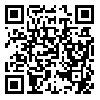Volume 6, Issue 7 (2016)
LRR 2016, 6(7): 33-52 |
Back to browse issues page
1- Ph.D. candidate in Linguistics, University of Sistan and Baluchestan, Sistan and Baluchestan, Iran
2- 2. Assistant Professor of Linguistics, University of Sistan and Baluchestan, Sistan and Baluchestan, Iran
3- Associate Professor of Persian Language and Literature, University of Birjand, Southern Khorasan, Iran
2- 2. Assistant Professor of Linguistics, University of Sistan and Baluchestan, Sistan and Baluchestan, Iran
3- Associate Professor of Persian Language and Literature, University of Birjand, Southern Khorasan, Iran
Abstract: (9227 Views)
Although regular study of the story plots opened the new way into analysis in literature by the formalists’ studies, especially by Propp's findings, Structural narratologists after Propp, including Greimas, have tried to find a comprehensive pattern for the study of narration by removing some shortcomings of Propp's framework. This article tries to answer these questions by studying Joseph Story in The Quran according to Propp’s and Greimas' views: do Propp's findings conform to The Quran’s Stories? Can these three syntagmes offered by Greimas be found in The Quran’s stories? Analyzing Joseph Story as a sample of The Quran’s stories can decide which of these views is more efficient in the analysis of The Quran’s stories. The text of the twelfth surah of The Quran has been examined with a descriptive-analytic method. The findings of this study show that: 1) in spite of the fact that Propp's view is capable of analyzing a lot of stories, analyzing The Quran’s stories according to this view requires basic changes in it. 2) Due to the fact that Greimas' syntagmes are not specified for a special kind of narration, they can be found in The Quran’s stories, too. 3) Considering the analysis of Joseph Story as a sample of The Quran’s stories, it can be said that Greimas' view is more efficient in the analysis of The Quran’s stories than Propp's view.
| Rights and permissions | |
 |
This work is licensed under a Creative Commons Attribution-NonCommercial 4.0 International License. |

